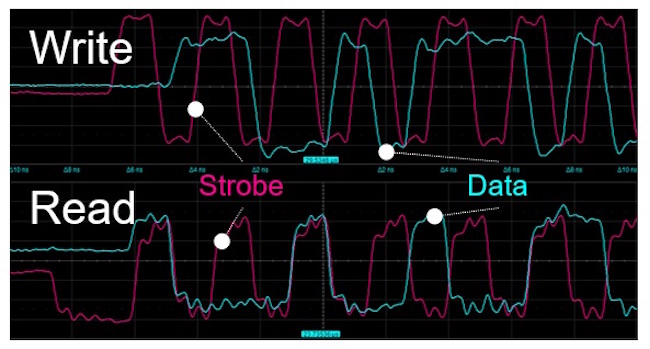Page 24: Frequency Memories To start scanning, first recall a general-purpose CW, 3 for data, etc. Memories can be set up manually frequency memory as described at left. Then hold or with the Elecraft Frequency Memory Editor (pg. Until appears on VFO B (3 s). Page 25: Audio Effects. The Elecraft KX3, K2, tuners, and linear amp kits capture the excitement of building and operating your own full-featured HF systems. Discover the thrill of building and really understanding your own radio equipment.

Elecraft K3 Frequency Memory Editor
Elecraft Frequency Memory Editor Pro

Elecraft Frequency Memory Editor
Using the 'Elecraft K3 Memory Editor' the CW, SSB & RTTY freqs were stored in a few of the ten channel memory banks. When the 'Frequency Hopping' was started, the K3 hopped properly to the frequencies in each of the 10 memories, but did NOT follow the mode set in the memories. Elecraft K3 - Frequency Memory Use Fred Jensen Mon, 06 Feb 2012 12:35:35 -0800 I loaded some of my frequency memories right after Dick released his K3 Editor for them, and then never used any of them. 'The Elecraft Frequency Memory Editor helps you maintain frequency memories using a spreadsheet format. Memories can be recalled using K3, K3S, and KX3’s MV switch or the memory editor’s “QSY” buttons. Once memories are stored in your K3, K3S, and KX3, you.
#67557 I find this memory Editor from Elecraft to have limited capability. Apparently it is not possible to insert a new memory location into an already established sequence, nor is it possible to move a memory 'up' or 'down' in the sequence. Can anyone let me know if a more 'capable' memory editor exists for the KX line of Transceivers ? Gordon VE3JSJ (Proud owner of KX1, KX2, KX3, KXPA100) |
#67558 You can select an entire line by right clicking on the memory 'number' and then cut and paste it. toggle quoted messageShow quoted textYou should be able to move a 'block' of entries in that manner. Hank From: Gordon (g@...) Date: 09/30/20 10:03 To: Elecraft-KX@groups.io Subject: [Elecraft-KX] Elecraft K3 Frequency Memory Editor I find this memory Editor from Elecraft to have limited capability. Apparently it is not possible to insert a new memory location into an already established sequence, nor is it possible to move a memory 'up' or 'down' in the sequence. Can anyone let me know if a more 'capable' memory editor exists for the KX line of Transceivers ? Gordon VE3JSJ (Proud owner of KX1, KX2, KX3, KXPA100) |
#67559 Thanks Hank, Yes, that is true, but it overwrites those memories, which is less than desirable Gordon VE3JSJ |
#67560 Flash memory is written in blocks not in individual memory locations. Data is buffered in RAM then written to flash memory in blocks. It is how flash was designed. Kevin. KD5ONS Thanks Hank, Yes, that is true, but it overwrites those memories, which is less than desirable |
#67562 Flash memory is written in blocks not in individual memory locations. Data is buffered in RAM then written to flash memory in blocks. It is how flash was designed. Kevin. KD5ONS True, but how the data is written to flash does not have to dictate how it is displayed to the user of the memory editor. With a little more complexity, the app could allow the user to arrange the memories any way they like on the user interface. Including allowing memories to be inserted and not overwritten. Then at write time the app could assemble the information in the specified order into one RAM buffer that then gets written to flash in blocks. Richard - K4KRW |
#67563 I haven't had any issues but I do not change memories around much. Write elecraft about it if you haven't already. Enough people with the same request may spark enough interest for them to take a look. Never hurts to ask. Kevin KR6AI toggle quoted messageShow quoted textOn Oct 2, 2020 12:32, Richard Dodd <richard.k4krw@...> wrote:
|
#67564 My bad your talking about K3 which I have little experience with. I use a kx2. Do not know if memory editors are similar or not. KR6AI On Oct 2, 2020 17:44, kevinandpatty@... wrote:
|
#67565 I have heard that the Elecraft commands are similar to Kenwood. If so, it might not be too hard to make Chirp work with Elecraft rigs. toggle quoted messageShow quoted textThere has been an open request for that with Chirp for eight years. Of course, that is an open source, volunteer project, so someone needs to step up and actually do it. wunder K6WRU Walter Underwood CM87wj http://observer.wunderwood.org/ (my blog)
|
#67566 AKIK there's only one memory editor and it works for K3/K3S, KX3 and KX2. I don't know if it will work with the K4. I use it with my K3 and KX2 and find it to be perfectly adequate, although I don't make frequent changes. 73, On Oct 2, 2020, at 17:49, Kevin Burgess <kevinandpatty@...> wrote:
|
#67581 Much like rows in Excel, you can move multiple rows around in the Elecraft Frequency Memory Editor. You can even have two or more instances open in case you want move a large number of rows around. I find it very handy and use the editor almost weekly. I place the weekend's QSO parties suggested frequencies into a block of rows, one column each for CW and SSB. I use the '60' series for 60m and the M1-M4 memories for different modes on each band. A little forethought goes a long way in planning a useful series of memories for each user. Additionally, the Editor makes it easy to 'transfer' memories from one Elecraft HF rig to another. The built-in Help file is, well, helpful. -- ARRL - The national association for Amateur Radio™ Duke City Hamfest BoD Vice-Chairman www.dukecityhamfest.org 17-19 Sep 2021 Secretary and Past President, Albuquerque DX Association W6H NM Coordinator, Route 66 On-the-Air 12-20 Sep 2020 |
Elecraft Frequency Memory Editor Software
